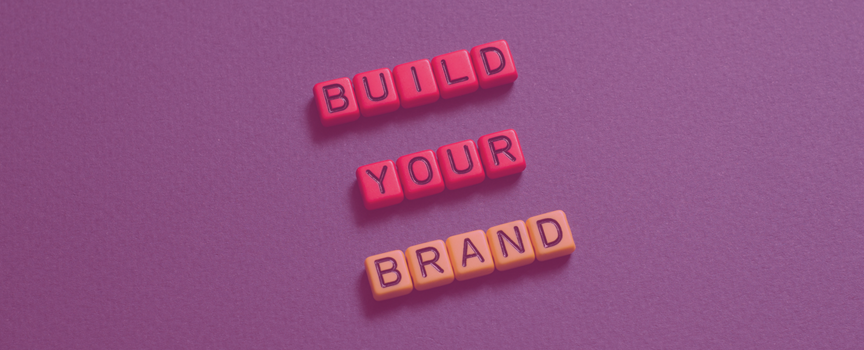The Role of Graphic Design in Building Brand Identity

Table of Contents
Creating a memorable brand identity is essential for businesses of all sizes. According to Forbes, consistent brand presentation can increase revenue by up to 23%.
At its core, brand identity encompasses the visual and verbal elements that shape how a brand is perceived by its audience. Graphic design is one of the key elements, and it plays an important role in establishing and reinforcing a brand’s image.
This post explores the critical intersection between graphic design and brand identity, providing insights and practical tips to help small business owners, marketing professionals, and graphic design enthusiasts build strong, recognisable brands.
The Intersection of Graphic Design and Brand Identity

Visual Elements, Logos, Color Schemes, and Fonts
A brand’s visual elements are often the first point of contact between a business and its audience. Logos, colour schemes, and fonts are not just decorative but vital components of small business branding. A well-designed logo serves as the face of your brand, making it instantly recognisable. Meanwhile, a harmonious colour scheme evokes specific emotions and associations, while carefully selected fonts enhance readability and convey the brand’s tone.
Consider how Coca-Cola’s red and white colour scheme evokes joy and nostalgia. These visual elements collectively contribute to a cohesive and compelling brand identity.
Consistency in Design Across Platforms
Consistency is key in branding and graphic design. A brand must maintain a uniform look and feel across all platforms—website, social media, print materials, and packaging. This consistency helps build trust and credibility, making it easier for customers to recognise and connect with the brand.
Inconsistent design can confuse customers and dilute the brand’s message. By ensuring that design elements are consistent across all touchpoints, businesses can create a seamless and professional image.
How Design Reflects Brand Values and Personality

Graphic design is more than just aesthetics; it’s a powerful tool for conveying a brand’s values and personality. Whether your brand is playful, sophisticated, eco-friendly, or innovative, your design choices should reflect these attributes. For example, a sustainable brand might use earthy colours and organic shapes, while a tech company might opt for sleek, modern designs.
Aligning design elements with your brand’s core values can create a deeper connection with your audience and differentiate your brand in the market.
Examples of Small Businesses with Strong Visual Identities
Several small businesses have successfully leveraged graphic design to build strong brand identities. Take Warby Parker, an eyewear company known for its minimalist and sophisticated design. Their consistent use of clean lines, blues, and whites creates an approachable yet stylish image.
Analysis of Their Design Choices and Impact on Brand Recognition
Warby Parker’s design choices such as its elegant logo and cohesive colour palette have significantly contributed to its brand recognition. Maintaining a consistent and polished visual identity has cultivated a loyal customer base and set it apart from competitors.
Another example is Glossier, a beauty brand that uses soft pinks and modern typography to convey a message of simplicity and inclusivity. Their visual identity resonates with their target audience, making their products recognisable.
The Process How to Develop Your Brand’s Visual Identity
Creating a distinctive brand look involves several steps:
- Define Your Brand’s Core Values: Understand what your brand stands for and what makes it unique.
- Research Your Target Audience: Know who your customers are and what they value.
- Create a Mood Board: Collect images, colours, and designs that reflect your brand’s identity.
- Design Your Logo and Visual Elements: Work with a designer to create a logo, colour scheme, and typography that align with your brand.
Also Read
- Best Practices For Designing Social Media Graphics
- Top 5 Website Maintenance Tips for Hospitality Websites
- How Local SEO Can Drive More Customers to Your Business
- Transform Your Lead Generation with Powerful CTAs
Tips for Choosing the Right Designer or DIY Tools
Whether you hire a professional designer or use DIY tools, ensure that your designs are high-quality and reflect your brand’s identity. Platforms like Canva and Adobe Spark offer user-friendly options for creating professional-looking designs.
Trends in Branding and How They Are Influencing Graphic Design
The world of graphic design is constantly evolving, influenced by trends such as minimalism, bold typography, and animated graphics. Staying updated with these trends can help brands remain relevant and engaging.
The Role of Technology and Innovation
Technology and innovation are driving the future of branding with graphic design. AI, AR, and VR advances are opening new possibilities for creating immersive and interactive brand experiences. Brands that leverage these technologies can create more personalised and engaging interactions with their audience.
Conclusion
Graphic design is an important component of brand identity for businesses. By investing in professional design, businesses can create strong, memorable brands that resonate with their audience. Whether you’re a small business owner, a marketing professional, or a graphic design enthusiast, understanding the role of design in branding is essential for building a successful brand.
Feel inspired to take your branding to the next level? Share your thoughts and experiences in the comments below. Let’s continue the conversation on the evolving nature of branding and design.
